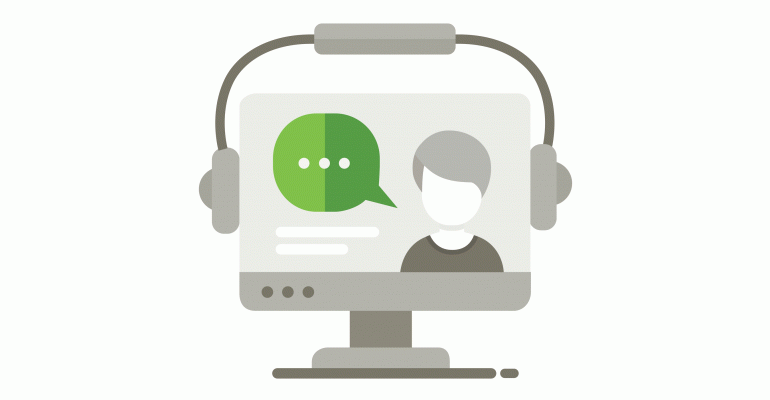Webinars are a lot of work, but they also are a great way to share background information for an on-site flipped-learning session at a conference, fill people in on the latest in your field, and generally help grow the knowledge base of people in your industry. Oh, and those sponsorship dollars are not unwelcome, either! But it sometimes can be a challenge to attract the participants you want, and to keep them engaged for the duration of the webinar. ON24, a webinar-hosting platform, recently crunched data from more than 16,000 webinars they supported in 2016, randomly selected from the 65,000-plus webinars ON24 supported globally last year (download the study here, free registration required). Here are 10 key takeaways I got from the study.
1. Promote them early and often. Market them the same way you do your in-person events. Yes, ON24 found that more than half register the week of the event—25 percent the day of—but 44 percent sign up 15 to eight days ahead of time, so if you limit promotions to just the week of, you may be missing out on a lot of potential registrants. As the study says, “Pursuing a longer promotional cycle that includes a series of email drops and extended social promotion over several weeks will provide more chances to drive a large audience to your webinars.”
2. Know when to send. Promotions sent mid-week are likely to score the best results, according to the study. Marketing materials sent Tuesday, Wednesday, and Thursday tend get a 22 percent response rate, compared to 17 percent on Mondays, 11 percent on Fridays, or a dismal 5 percent when sent over weekends.
3. Schedule your webinars on Wednesdays and Thursdays. A good 55 percent of attendees show up for webinars held on Wednesday (27 percent) and Thursday (28 percent). Attendance drops off precipitously on Fridays (8 percent) and over the weekend (3 percent). At 23 percent, Tuesdays are your next best bet, followed by Mondays at 11 percent.
4. A 2 p.m. ET slot is your webinar’s scheduling sweet spot. The study found that webinars held at that hour scored the highest with attendees, followed by 1 p.m. ET and 3 p.m. ET, and then noon and 11 a.m. It’s definitely best to avoid the lunch hour and commuting times.
5. Expect that they will stay on for almost the full hour. While we can’t know if they’re actually paying attention the whole time, participants do tend to stay logged in for more than 55 minutes, the study found, down just a minute from the previous year’s survey results. We find that it helps to sprinkle in some interactive elements periodically, such as polls or questions, and even changing the speakers every 10 minutes or so seems to help keep engagement high.
6. They may register, but will they come? If your conversion rate is below 35 percent, it’s time to check your marketing strategy (see numbers 1 and 2). The study found that 35 percent to 45 percent conversion rate is pretty respectable overall. Of course, it depends on the type of webinar you’re holding. For webinars held for internal communications purposes, the average conversion rate was the highest at 54 percent. Next highest was for training webinars (45 percent), then continuing education (40 percent); with marketing webinars coming in lowest (36 percent).
7. Attendance is on the rise. While all the webinars used for the study had at least 100 attendees, the study authors say they have seen a rise in webinars that draw more than 1,000, which in 2016 represented 7 percent of the webinars held on that platform. A quarter of the webinars attracted between 300 and 1,000, and about a fifth drew 200-300 attendees, but the bulk still are in the 100-199–attendee range (47 percent).
8. Use those widgets. The platform the webinars in the study used includes a series of widgets organizers can use to engage, and engage with, the audience: Q&A, a resources list, social media, and surveys. Eighty-two percent used the Q&A widget, 66 percent provide additional resources (we include related articles and presentation slides, usually), and 31 percent gave attendees an easy way to connect through the console to their Twitter, LinkedIn, and Facebook accounts to spread what their learning through their social feeds. I was a little surprised to see that just 24 percent used the polling widget, but not surprised to see that just 7 percent used the group chat. While the latter can be a powerful tool, it also can be a powerful distraction sometimes.
9. Incorporate video. Use of video has doubled in the past two years. In 2014, just 9 percent of webinars included a video element (be it the presenters themselves, integrated clips, or streaming video and screen sharing). In 2016, that was up to 18 percent. I would expect this percentage to keep rising as bandwidths and YouTube viewership continue to grow in tandem.
10. Keep on promoting on-demand availability after the live event. About a third of your audience is likely to have to skip the scheduled event, but they do want to watch it at their leisure afterward. Be sure to let them know when it’s available on demand—while most will watch it within a week of the live event, you’ll likely find a pretty long tail of interest for months afterward. We keep ours up for a full year.
And oh, by the way, we have a couple of live webinars coming up, just in case you need a few credit hours toward your CMP or just want to learn a few new things (for free, no less!):
How to Engage Your Attendees and Increase Mobile Adoption, May 23 at 2 p.m. ET
How to "C" Your Way to Your Best Event Yet, May 25 at 2 p.m. ET




